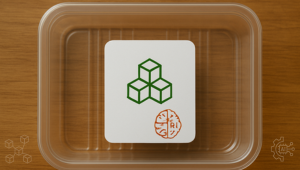Program Overview
This program enables manufacturing, maintenance, and engineering professionals to transition from reactive maintenance to a predictive, zero-downtime reliability model powered by IoT sensors, AI, and real-time analytics. Participants will gain an in-depth understanding of condition monitoring, machine learning–based fault prediction, and smart factory integration for continuous improvement. Through domain-specific case studies from tyre and automotive manufacturing, and simulations involving sensor mapping, data analysis, and control-room design, participants will learn to analyze equipment health, anticipate failures, and optimize uptime — aligning plant operations with the principles of Industry 4.0 and digital transformation.
Features
- Understand the evolution of maintenance practices and quantify the benefits of predictive approaches
- Design IoT sensor frameworks for real-time condition monitoring of critical assets
- Apply AI and analytics to predict failures and extend asset life cycles
- Build an implementation roadmap for predictive maintenance within smart factory operations
Target audiences
- Maintenance & Reliability Engineers
- Process & Automation Teams
- Plant Operations & Manufacturing Managers
- Data Analytics / Digital Transformation Professionals
Curriculum
- 6 Sections
- 33 Lessons
- 1 Day
Expand all sectionsCollapse all sections
- Maintenance Evolution – From Breakdown to Predictive5
- Sensorization & Condition Monitoring7
- 2.1Vibration, temperature, current, torque, and acoustic sensors
- 2.2Edge devices and connectivity protocols (OPC UA, MQTT, LoRaWAN)
- 2.3Real-time dashboards and anomaly detection
- 2.4Data integration with MES/ERP and CMMS systems
- 2.5Continental – Predictive analytics for curing press operations
- 2.6Bridgestone – Condition-based maintenance through IoT and data analytics
- 2.7Exercise: Design a sensor map for a critical tyre-building machine — define key parameters, thresholds, and alert triggers
- Analytics, AI & Machine Learning for Reliability7
- 3.1Data cleaning and feature engineering for maintenance datasets
- 3.2Pattern recognition through machine learning (regression, anomaly clustering)
- 3.3Remaining Useful Life (RUL) prediction
- 3.4Integration with CMMS / EAM tools (Maximo, SAP PM)
- 3.5Root-cause analytics and automated maintenance alerts
- 3.6Michelin – AI-driven maintenance optimization; Goodyear – predictive reliability in curing systems
- 3.7Interactive Exercise: Analyze sample vibration and temperature data in Excel/Python to predict potential failure windows
- Smart Factory Integration & Autonomous OperationsRobotics and drones for inspection and lubrication tasks6
- 4.1Closed-loop feedback between sensors ↔ SCADA ↔ MES
- 4.2Digital maintenance twins and automated work-order generation
- 4.3Robotics and drones for inspection and lubrication tasks
- 4.4Energy and asset performance dashboards
- 4.5Cross-functional integration of maintenance, production, and quality
- 4.6Exercise: Design a “Smart Maintenance Control Room” concept — define key dashboards, KPIs, and escalation logic
- Human-Machine Collaboration & Change Management5
- 5.1Technician upskilling in data literacy and sensor interpretation
- 5.2AR-based maintenance training and digital SOPs
- 5.3Overcoming resistance to AI-driven decision-making
- 5.4Collaborative ownership between production and maintenance
- 5.5Role-play: Maintenance lead vs. plant head on CAPEX approval for predictive maintenance investment, resolved via ROI argumentation
- Action Planning & Implementation3






